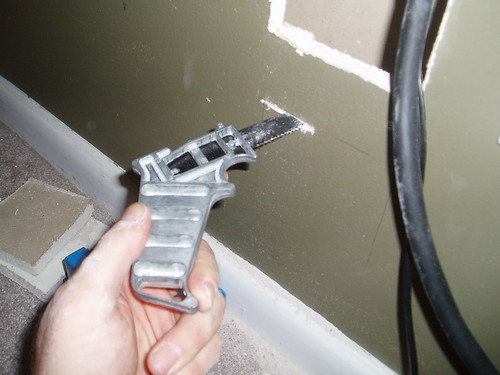DIY Friday: Flat Panel TV
No, I’m not suggesting you build your own television. Having you mess with a capacitor would get me sued in no time. But, when you buy yourself that sleek, flat-panel HDTV for some improved March Madness’ing, you don’t necessarily need to pay for an expensive installation.
One of the major appeals of flat panel TVs such as plasmas and LCDs is the space savings they create by hanging on the wall, out of the way. But do you need a pro to get that clean on-the-wall look? Not if you’re handy with a screwdriver, drill and know how to draw a straight line. We walk you through the steps of a typical flat panel install and highlight some of the areas where home owners may get “hung up.”
Before you get started drilling or bolting anything, you must carefully select the location. This is a much more serious decision than just picking a good place for a TV. Once you mount your plasma, the design of the entire room must be planned around it, and there’s no going back–you can’t just move the TV to another wall without remounting it, patching holes and repainting. Pick a location where the TV will be easily viewed by all seats in the room, which will also accommodate your speakers and can be conveniently connected to the rest of your components. If you want to put your TV on one wall and your components on the other side of the room, you’ve just seriously complicated your job. Also consider the placement of electrical outlets and lines. Although you will need to add a new outlet for the TV, having other outlets nearby makes the job easier. Also consider the height. While eye level is often ideal for TV viewing, large plasma TVs look better if placed a few inches above eye level, but not high enough to cause neck strain. A plasma mounted above a fireplace may look cool, but running wires behind and around a brick fireplace is a big job, and the height of the TV will hurt your neck after prolonged viewing.
Complete instructions are here. In short: find the wall studs, draw where the tv will go, bolt in the mounting rails, and attach the tv.
But what about all those wires?

Aesthetically, running cables through a wall yields the best results. Yet from a practical perspective, this requires substantial DIY skills, and a lot of effort especially when retrofitting a room. Furthermore, should you decide to hire a professional installer, the whole job can turn out to be pretty expensive – costing several hundred dollars – and often complicated to manage.
In addition, once cables are installed in walls and access holes closed, it would not be easy to replace any faulty cables, nor pass extra cables later.
Equally important, burying cables in walls as a wiring solution is invasive in nature. It requires expensive patching should the day come when you decide to move that flat panel TV elsewhere.
Some old-fashioned wire camouflage might be your best bet. But if you want to brave the behind-the-wall strategy, try these instructions. (NOTE: flickr photo notes are perfect for DIY instructions.)

If you’re feeling discouraged because your tax rebate is still in the mail—because you’re still stuck with a clunky 27 inch rear-projection television—do not worry. Just make it flat-screen, hillbilly-style:
Turns out all you need to turn that bulky old clunker of a TV into a slick-looking flat panel is a little extra closet room! I bet your wheels are turning now, aren’t they — thinking up all the other cool things you could embed into your walls. I should warn you, however, that console TVs don’t look quite as nice as the newer model televisions.


